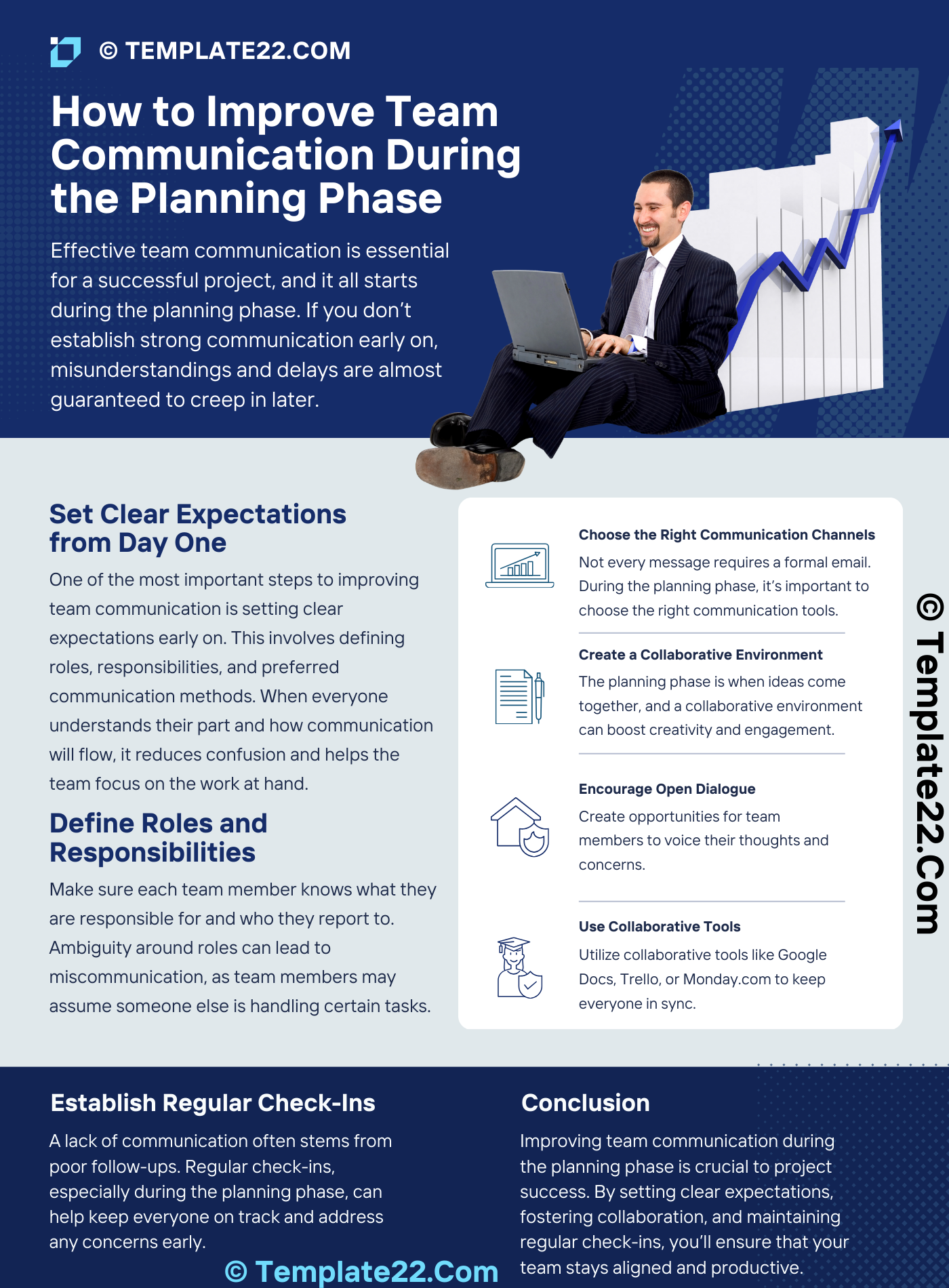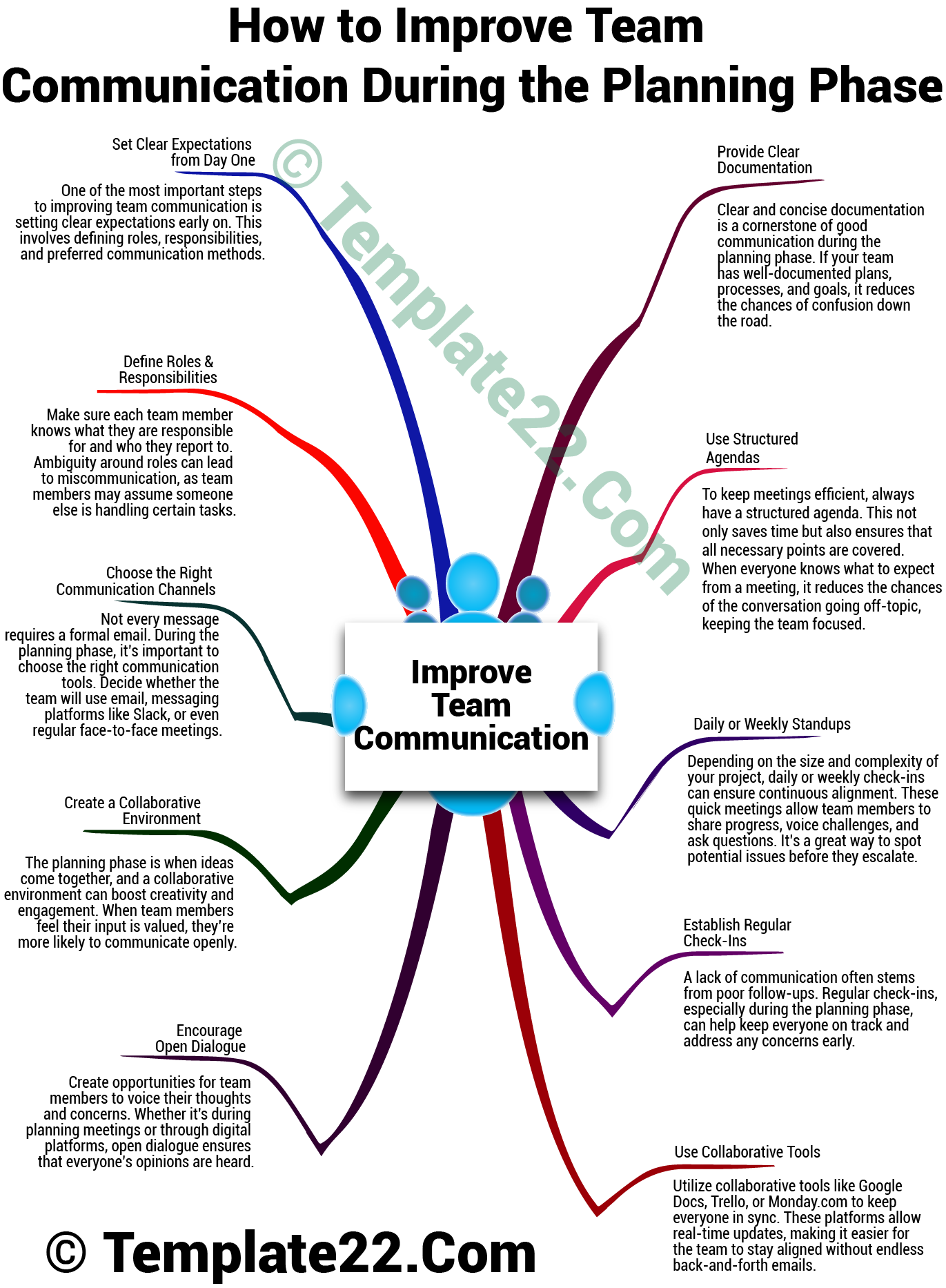 Effective team communication is essential for a successful project, and it all starts during the planning phase. If you don’t establish strong communication early on, misunderstandings and delays are almost guaranteed to creep in later. So, how can you make sure your team is aligned from the get-go? Let’s explore some practical strategies to improve team communication during the planning phase of any project.
Effective team communication is essential for a successful project, and it all starts during the planning phase. If you don’t establish strong communication early on, misunderstandings and delays are almost guaranteed to creep in later. So, how can you make sure your team is aligned from the get-go? Let’s explore some practical strategies to improve team communication during the planning phase of any project.
Set Clear Expectations from Day One
One of the most important steps to improving team communication is setting clear expectations early on. This involves defining roles, responsibilities, and preferred communication methods. When everyone understands their part and how communication will flow, it reduces confusion and helps the team focus on the work at hand.
Define Roles and Responsibilities
Make sure each team member knows what they are responsible for and who they report to. Ambiguity around roles can lead to miscommunication, as team members may assume someone else is handling certain tasks. A clear breakdown of duties ensures that everyone knows who to talk to when issues arise.
Choose the Right Communication Channels
Not every message requires a formal email. During the planning phase, it’s important to choose the right communication tools. Decide whether the team will use email, messaging platforms like Slack, or even regular face-to-face meetings. The goal is to keep communication efficient, without overloading team members with unnecessary messages.
Create a Collaborative Environment
The planning phase is when ideas come together, and a collaborative environment can boost creativity and engagement. When team members feel their input is valued, they’re more likely to communicate openly.
Encourage Open Dialogue
Create opportunities for team members to voice their thoughts and concerns. Whether it’s during planning meetings or through digital platforms, open dialogue ensures that everyone’s opinions are heard. This not only improves communication but also fosters a sense of ownership and accountability among the team.
CLICK HERE TO DOWNLOAD 300+ PROJECT MANAGEMENT TEMPLATES & DOCUMENTS IN EXCEL
Use Collaborative Tools
Utilize collaborative tools like Google Docs, Trello, or Monday.com to keep everyone in sync. These platforms allow real-time updates, making it easier for the team to stay aligned without endless back-and-forth emails. Everyone can see the progress and comment directly on the tasks, reducing misunderstandings.
Establish Regular Check-Ins
A lack of communication often stems from poor follow-ups. Regular check-ins, especially during the planning phase, can help keep everyone on track and address any concerns early.
Daily or Weekly Standups
Depending on the size and complexity of your project, daily or weekly check-ins can ensure continuous alignment. These quick meetings allow team members to share progress, voice challenges, and ask questions. It’s a great way to spot potential issues before they escalate.
Use Structured Agendas
To keep meetings efficient, always have a structured agenda. This not only saves time but also ensures that all necessary points are covered. When everyone knows what to expect from a meeting, it reduces the chances of the conversation going off-topic, keeping the team focused.
Provide Clear Documentation
Clear and concise documentation is a cornerstone of good communication during the planning phase. If your team has well-documented plans, processes, and goals, it reduces the chances of confusion down the road.
Share Project Plans and Timelines
Provide your team with detailed project plans and timelines. When everyone understands the big picture and how their work fits into it, communication becomes more streamlined. Project management software can help with this by providing a visual representation of tasks and deadlines.
Document Meeting Minutes
After every meeting, ensure that someone takes and shares meeting minutes with key action items and decisions. This creates a single source of truth that team members can refer back to, minimizing the risk of forgetting or misinterpreting what was discussed.
Address Communication Barriers Early
Communication barriers can come in many forms, from cultural differences to technological challenges. Identifying and addressing these barriers early in the planning phase can prevent bigger issues later on.
Identify Potential Language or Cultural Differences
If your team is international, consider the potential for language or cultural misunderstandings. Encourage team members to clarify anything unclear and be patient with one another. Consider providing training on cross-cultural communication if necessary.
Ensure Technological Tools Work for Everyone
If the team relies on technology to communicate, make sure the tools are accessible and comfortable for everyone. Some team members may need training or technical support to fully use the chosen platforms. Ensuring that everyone is comfortable with the technology will help prevent communication breakdowns.
Foster a Positive Communication Culture
A positive team culture where communication is valued will make the planning phase smoother. Encouraging respectful, clear, and timely communication builds trust and collaboration within the team.
CLICK HERE TO DOWNLOAD 300+ PROJECT MANAGEMENT TEMPLATES & DOCUMENTS IN EXCEL
Lead by Example
As a project leader, your communication style sets the tone for the rest of the team. Be transparent, approachable, and consistent in your communication. This will encourage your team to follow suit, improving overall communication across the board.
Celebrate Small Wins
Don’t underestimate the power of recognition. Acknowledging team members’ efforts and successes, even during the planning phase, can boost morale and open communication. When people feel appreciated, they’re more likely to stay engaged and communicate openly.
Conclusion
Improving team communication during the planning phase is crucial to project success. By setting clear expectations, fostering collaboration, and maintaining regular check-ins, you’ll ensure that your team stays aligned and productive. Addressing communication barriers early on and encouraging a positive communication culture will make the entire project run smoother, setting the stage for success from the very start.
